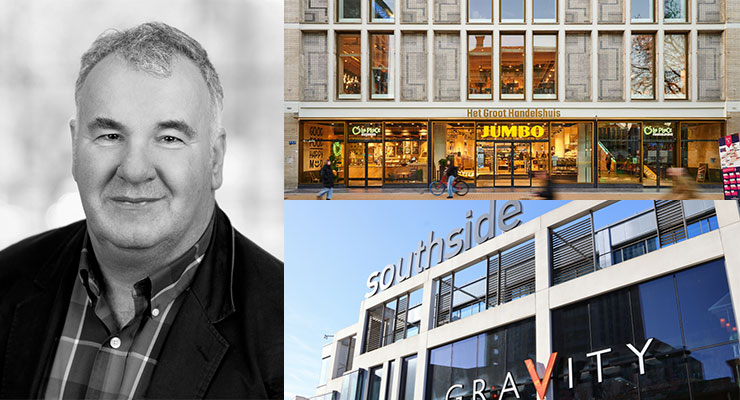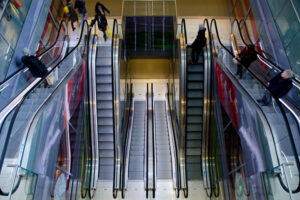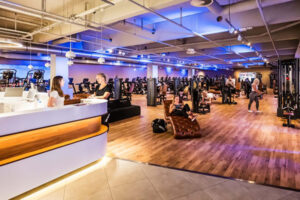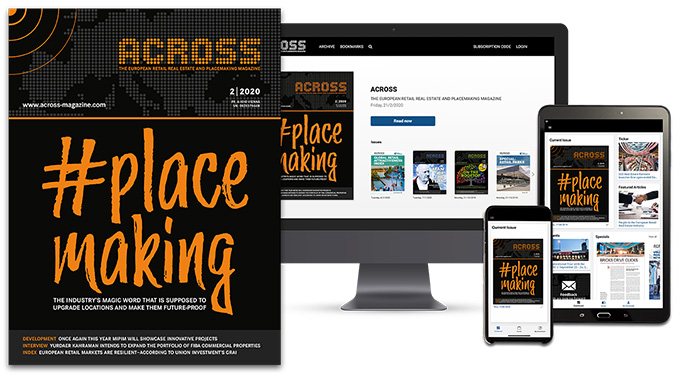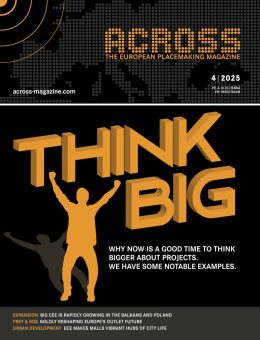By Herman Kok
Retail locations throughout Western Europe are changing rapidly. Vacancies, especially in smaller and mid-sized cities are on the rise, and irrelevant retail spaces, such as closed-down department stores, are in need of a functional shift. While underlying trends such as the impact of multi-channel retail, changing lifestyles, and purchasing power pressures among parts of the middle class have been issues for a while, the impact of COVID-19 accelerated certain trends.
While the transformation of irrelevant retail spaces into living spaces or working spaces is a clear trend, the shift “from fashion to leisure” is another one by which shopping centers are increasingly redefining themselves as hybrid environments: part market, part playground, part cultural venue. It reflects a broader structural disruption in consumer behavior, urban mobility, and the very experience of public space.
Consumers no longer just buy products – they seek memorable, shareable, and meaningful experiences and connections. That is particularly true for younger generations, who value lifestyle over ownership and place increasing importance on sustainability, identity, and community engagement.
Diverse Answers to Transformation in Retail
The response to this transformation has been remarkably diverse across Europe. Vacant department stores have become co-working spaces, public libraries, bowling centers, cinemas, and even museums.
In Groningen in the Netherlands, “Groot Handelshuis” (Great Trading House), Winner of the 2025 Kern Project Award, is a former V&D department store that has been repurposed as a mixed-use space featuring co-working offices and work facilities that are connected to Groningen University, convenience retail, gastronomy, and residential units, making it a key hub in the city center. It demonstrates how layered programming can sustain footfall and community relevance.
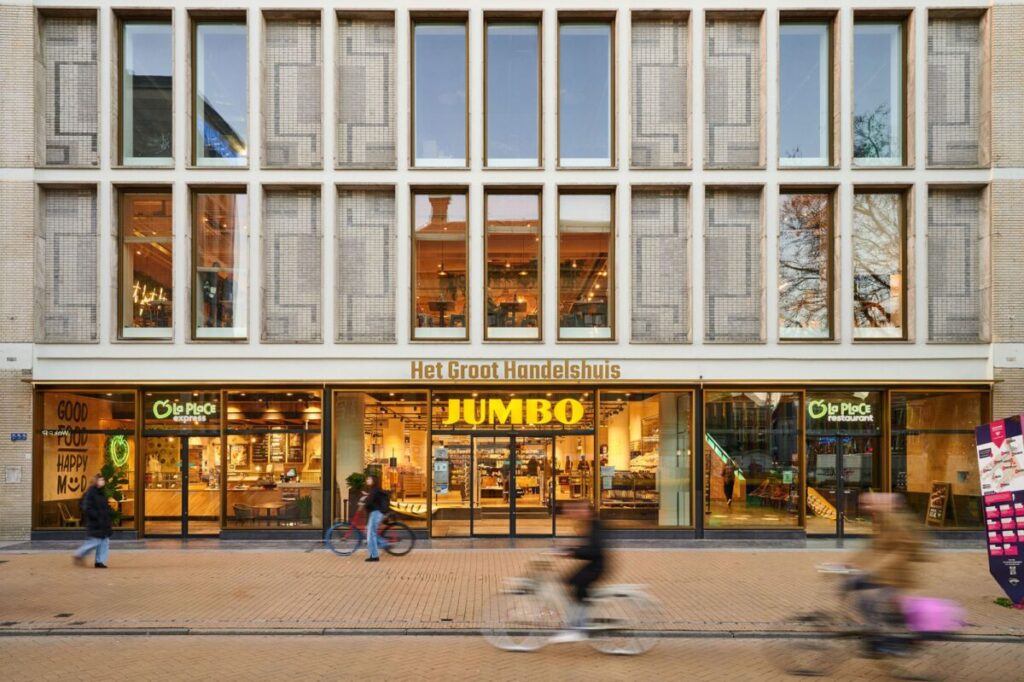
At Keyser Center, a UGC multiplex anchored gallery in Antwerp, Belgium, an underperforming basement supermarket and some adjacent F&B units have been successfully transformed into a Gamestate bowling and arcade, returning that kind of entertainment to the heart of the city.
A great example can be found in London, where a former 3-floor Debenhams department store at Southside Mall has been transformed into a Gravity, an immersive entertainment center with karting, bowling, mini-golf, and a number of games. Gravity has become an experience anchor at Southside Mall, giving the location a new leisure-focused heartbeat.
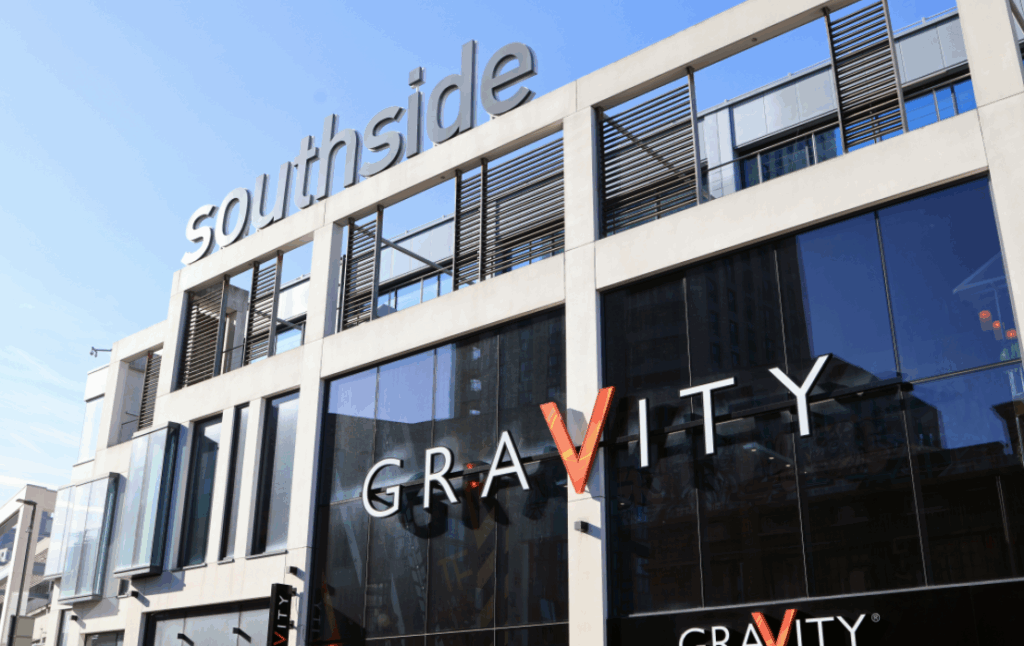
London is a global city, but leisure-based transformations can also work in smaller towns like Meppel, the Netherlands. A former department store anchor at the Keyserstroom town center shopping gallery in this 30,000-inhabitant town was successfully transformed into a cinema. Luxor Cinema, a leisure anchor in this small town was in need of a new location and better-quality accommodation, and the closed down department store premises were the solution. In that case, ambition perfectly aligned with the importance of community-wide facilities.
It’s also about the use of in-store leisure and public space, whether indoor or outdoor. Examples of sports stores that feature testing and leisure elements, such as Globetrotter in Germany as well as Adidas and Nike flagship stores, are well known. Keep large, themed bookstores with blurred components in mind as well. On the F&B side, Starbucks’ Reserve Roasteries venues offer a coffee-themed experience to clients. Eataly, an Italian themed market/tasting/dining concept, is experience based as well. And, take the Vytopna Restaurant in Prague, where people are served by model trains.
A nice example of in-store leisure can be found at the Mall of Switzerland near Luzern, where one can surf indoor at Oana, a store specialized in surfing-related products.
Anchor Profiles of Shopping Centers are Shifting
Across Europe, the anchor profiles of shopping centers are shifting. Where once large, multi-level department stores and hypermarkets guaranteed foot traffic, the focus has now shifted towards gastronomy halls, such as The Kitchen at the recently inaugurated Westfield Überseequartier in Hamburg – a nice example of Westfield’s dining experiences. The focus has also shifted towards cultural institutions, with multimedia libraries becoming main hubs in city centers such as Predikheren in Mechelen, Belgium, and Forum in Groningen.
It is common for district and neighborhood centers in Finland, such as Iso Omena and Lippulaiva in Espoo, Helsinki, to have libraries, study centers, health facilities, and child care services in anchor positions. Such centers clearly function as community centers rather than shopping centers.
The use of public space as a driver of leisure and experience is gradually evolving. For instance, one can see kids’ playgrounds securing more prominent positions, often in combination with coffee corners, where parents can sip a cup of coffee. The indoor playground at Il Centro in Arese, northwest of Milan, towers like a landmark inside the mall, and Gelderlandplein in Amsterdam is almost a museum in itself thanks to its fine pieces of art and sculptures. The shopping center and the outer street of Fabryka Norblina in Warsaw function as a museum – showcasing the history of the former Norblin Factory as a major manufacturer of silver cutlery. These areas are designed as integrative social platforms, not just as corridors between the stores.
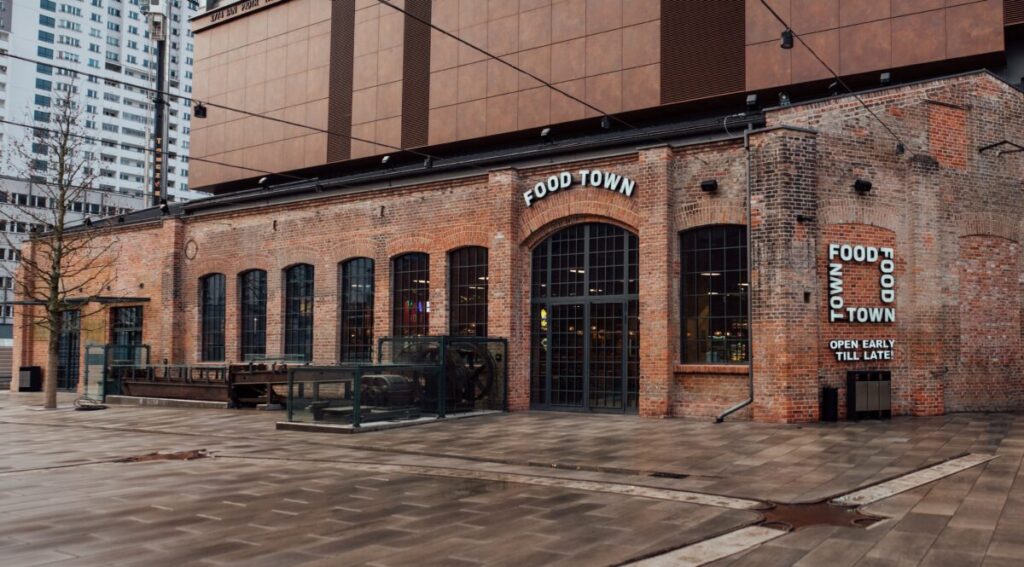
Rooftops are increasingly being recognized as relevant spaces for shopping centers and mixed-use projects. One of the most recent examples can be found in the newly developed Nivy shopping center in Bratislava, whose publicly accessible green roof is an additional anchor where people can meet, relax, play, and do sport.
The roof of PAKT in Antwerp is a shining example of how leisure can be redefined not just as entertainment, but as an active participation and education medium. PAKT is located on a former industrial site and integrates shared workspaces, sports, gastronomy, and cultural programs as well as the largest urban farm in Europe, covering close to 2,000 sq m on its rooftop. The urban farm was founded by farmers who were struggling to find agricultural land in densely populated Flanders and decided to change their approach. The local developer of PAKT, Immo Yaman, invited them to start a rooftop farm. The urban rooftop farm not only produces vegetables for its members and for local use, but also offers workshops, school educational programs, and public events. This hybrid model creates a place-based identity that is rooted in ecological and social values.
One unique place is the LX Factory in Lisbon, which is located in the center of Lisbon near the 25 de Abril Bridge. The former printing company has been transformed into a shopping, gastronomy, and craft center where a rich variety of fashion and accessory designers have their studios. While the industrial buildings have been modernized, their raw industrial look has been preserved. There are a number of specialty stores, many of which are Instagrammable, such as a bookstore, tea shop, and fashion stores, including vintage stores. The LX Factory is a hotspot for trendy and dynamic people, locals, and tourists alike.
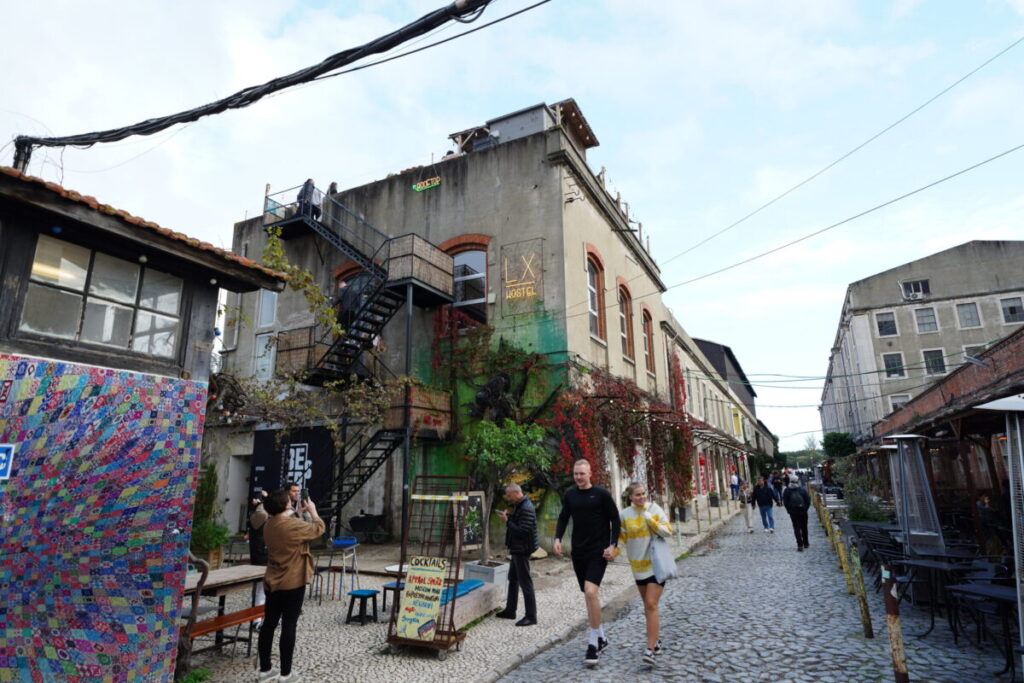
However, the inclusion of experience and leisure is not without its difficulties. Conversion costs are high, managing a diverse tenant mix is complex, and there’s a constant risk of leisure offerings failing to resonate. Over-saturation, short attention spans, and economic downturns – all of which are risk factors for leisure and entertainment programs – pose threats. Moreover, not all malls can be transformed into edutainment paradises or cultural centers.
Successful cases often rely on public-private partnerships, long-term vision, and strong local narratives. Flexibility, creativity, and a deep understanding of community needs are critical to avoid turning empty shops into empty “experiences”.
The transformation from fashion to leisure signals more than just a shift in retail strategy – it marks a broader reorientation in urban life. If done right, these projects contribute to vibrant town and city centers, offering social, educational, and ecological value. They have the potential to become the new hearts of towns and cities: not malls in the old sense, but modern agoras where experience, sustainability, and social connection converge.
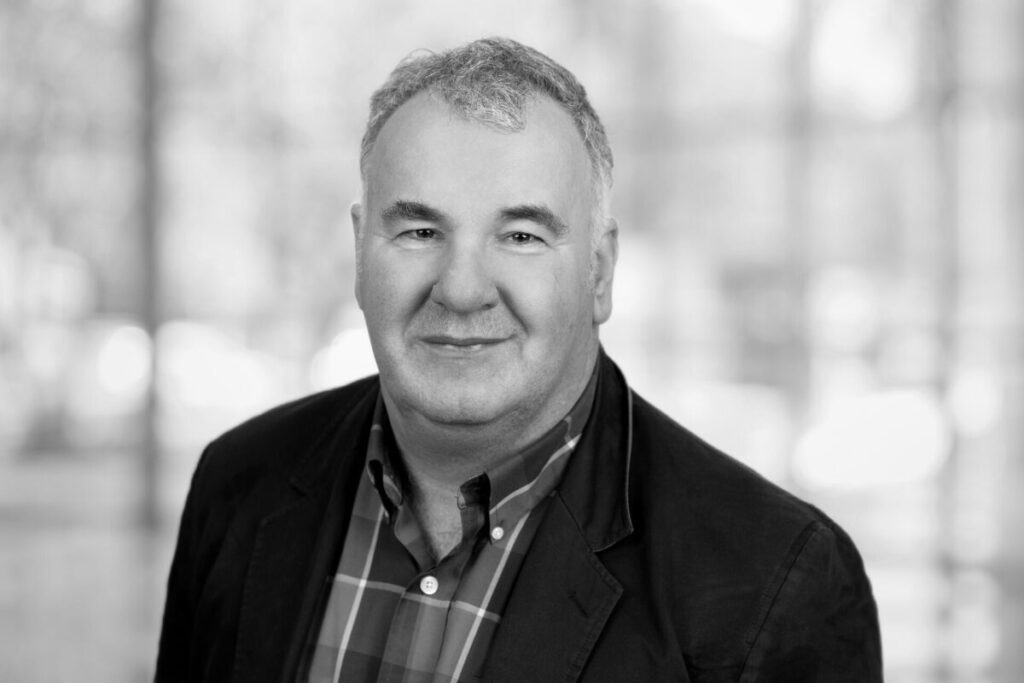
Herman Kok
Herman Kok is an Associate Partner at DISCvision

